This Is Why Einstein’s Greatest Blunder Really Was A Tremendous Mistake

100+ years ago, General Relativity came along, and Einstein gave the Universe a cosmological constant. Here’s why that was a mistake.
Back in the 17th century, Isaac Newton put forth the first comprehensive theory of gravity that worked: the law of universal gravitation. All objects with mass attracted all others with an instantaneous force determined by the distances between all pairs of objects (or particles). But when we discovered Special Relativity, and the fact that different observers would disagree about what those distance values were, we knew it couldn’t be the full story.
When Einstein put forth General Relativity in 1915, it truly heralded a revolution in physics. Masses didn’t just gravitate; all forms of energy did. Space and time weren’t fixed and absolute, but tied together as spacetime, with properties relative to each observer. And spacetime curves and evolves based on all the matter and energy present within it. Only, when Einstein first applied it to the entire Universe, a huge problem arose. That’s where the story begins.

Gravity is a runaway force, and this is true in both Newton’s and Einstein’s conception of gravitation. If you took some matter (with mass) and distributed it perfectly equally throughout space, you’d find that you had created a system in unstable equilibrium, like a rock precariously balanced atop a thin spire. So long as the conditions remain perfect, matter will stay uniform and the rock will remain balanced.
But give that rock the tiniest nudge — or move just one mass in the uniform Universe the tiniest quantum distance out of place — and you’ll leave equilibrium. As soon as the center of mass is no longer above the spire, it will begin experiencing a net torque, and that torque will cause the rock to fall over in short order. The same thing is true for an imperfect Universe, as the tiniest perturbation will lead to runaway gravitational growth in whatever small, local volume of space achieves the greatest density, over and above the average.
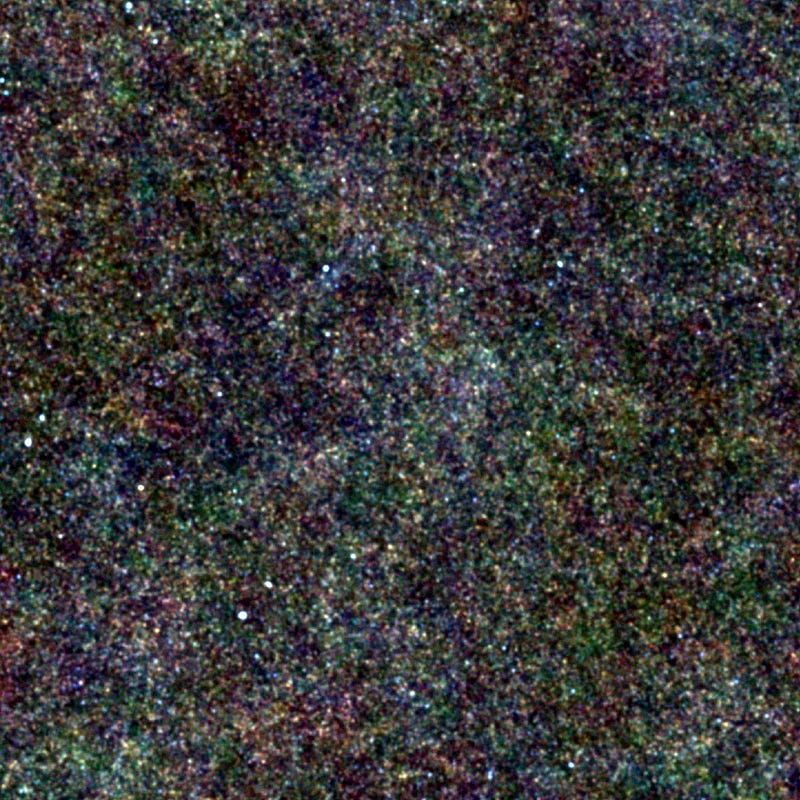
This problem occurs because gravitation is always attractive. The very nature of this force is such that a denser region of space will either have more mass within its volume (Newton) or cause the curvature of space to be greater at a particular event in spacetime (Einstein), which will preferentially attract the matter in the surrounding regions towards it, as compared to all the other surrounding regions.
Once that growth begins, it will never stop. Allow a little bit of time to pass, and you’ll find that this initially overdense region has grown to an even greater density, and now preferentially attracts matter/energy towards it even more effectively. In fact, any graduate student taking a course in General Relativity can learn to demonstrate that any initial, static distribution of matter at rest will collapse under its own gravity, leading inevitably to a black hole.
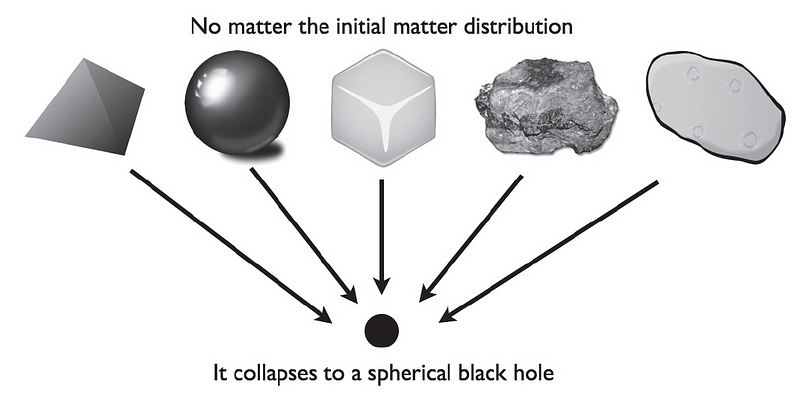
This is a feature of gravity, not a bug. But for Einstein, it posed an enormous conundrum. At the time he put forth General Relativity, there were many facts about the Universe we take for granted today that were not known to Einstein. These facts include:
- the knowledge that the faint spiral and elliptical nebulae seen by astronomers were actually galaxies unto themselves,
- the knowledge that the Milky Way wasn’t the full extent of the Universe,
- the knowledge that our (observable) Universe extends for billions of light-years, not just thousands,
- and the knowledge that our galaxy is an enormous, thin, rotating disk consisting of gas, dust, and hundreds of billions of stars, all embedded in an enormous dark matter halo.
Instead, Einstein’s view of the Universe was much simpler: an almost-perfectly uniform distribution of matter, largely in the form of stars, which remained the same over time.
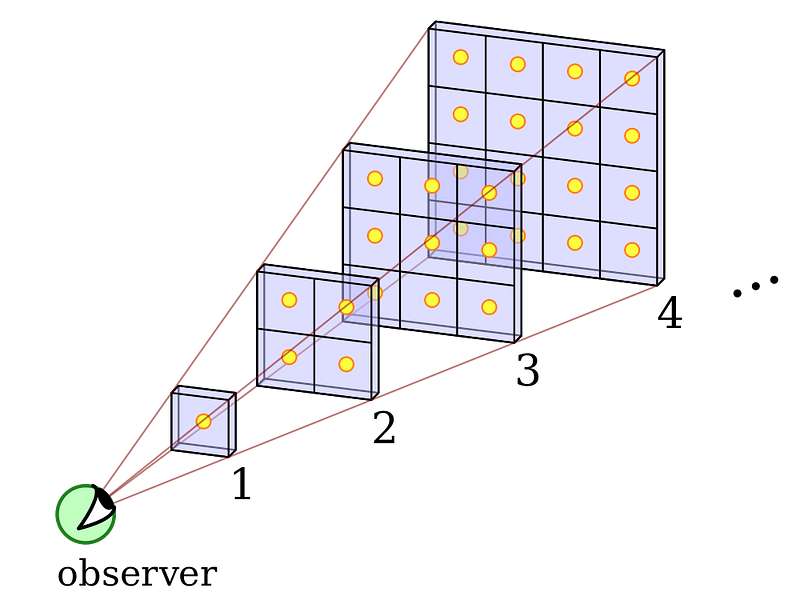
Are you seeing the problem? If Einstein’s theory of gravity, General Relativity, was correct, a static, uniform Universe would be unstable. On the other hand, if Einstein’s conception of the Universe as static and uniform were correct, it ought to not be described by General Relativity as Einstein set forth.
In other words, the Universe cannot be both static and uniform and also described by Einstein’s relation between the matter/energy present in the Universe and the properties/curvature of spacetime. There must be something else at play.
Einstein’s initial solution — the one he would later call his “greatest blunder” — was indeed to add in something else: a cosmological constant.
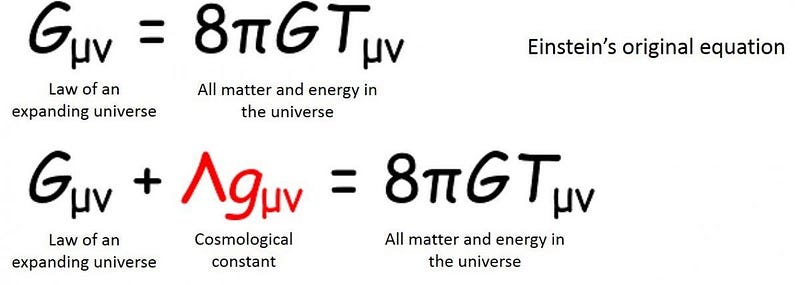
Gravity is always an attractive force, and it’s a force that gets stronger the smaller the spacetime interval that separates any two objects gets. What his equations permit, though, is the addition of a cosmological constant. A constant behaves as though it is a field with a uniform, positive energy density, but also a strong, negative pressure that alters the behavior of the Universe.
In particular, on its own, a Universe dominated by a cosmological constant would see the distance between any two points you selected increase over time in a particular (exponential) fashion. Einstein chose to pit these two effects against one another:
- gravitation works to attract masses towards one another,
- but the cosmological constant works to push any two points apart.
By tuning the cosmological constant to the right value, he could fight gravitational attraction by balancing its effects with this constant.
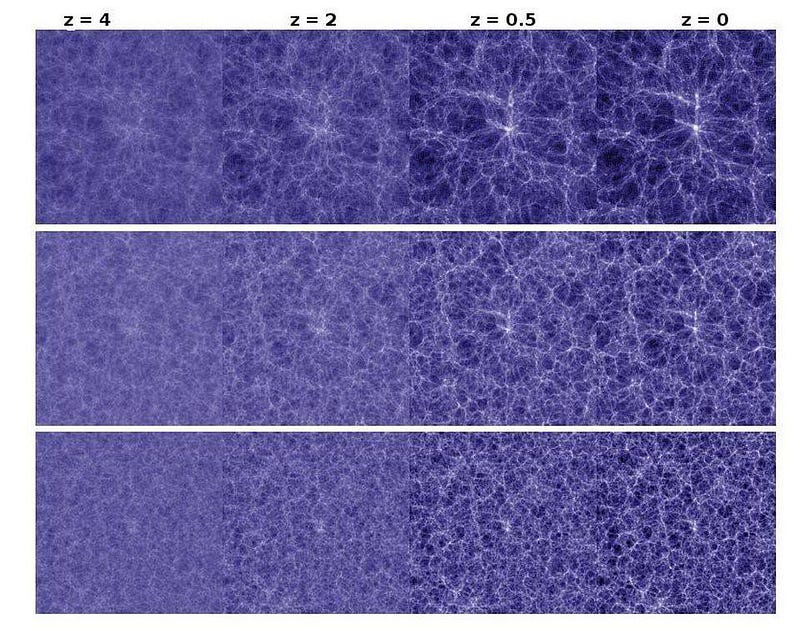
Of course, this isn’t satisfying at all, because it’s also an unstable solution. Move a mass a little too close to another and gravitation overcomes the cosmological constant, leading to runaway gravitational growth. Move a mass a little too far away and the cosmological constant is too strong, and will accelerate that mass away interminably. Everyone looking at the equations — likely including Einstein, too — recognized that this couldn’t be the actual answer.
But figuring out what the right answer could be would require some theoretical developments first. Whereas it’s easy to find exact solutions for how masses move in Newton’s theory (just combine his law of gravitation with his laws of motion), even today there are less than 20 unique exact solutions in General Relativity. The one that best models our Universe, however, would be one where the Universe was evenly filled, on the largest scales, with any generalized form of energy that you can cook up.
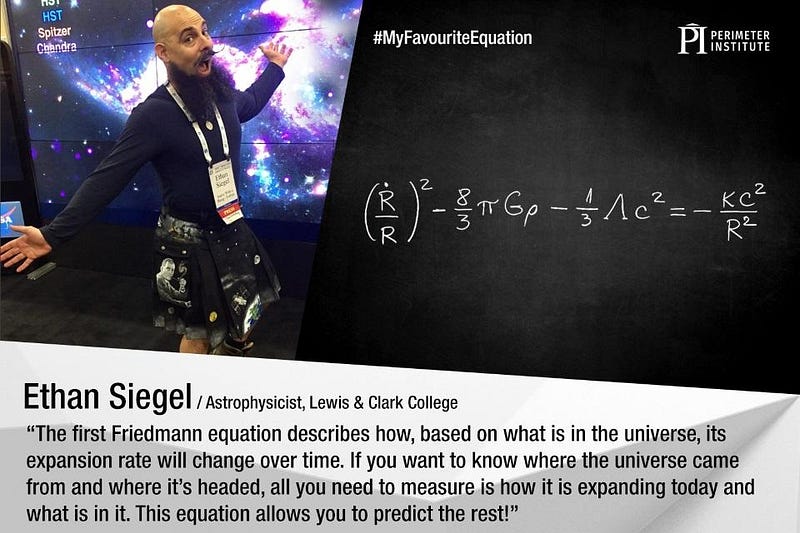
It wasn’t Einstein who solved it, however. In 1922, Alexander Friedmann was the first, and the equations that govern how a Universe that was filled evenly on the largest scales — meaning a Universe that’s both isotropic (the same in all directions) and homogeneous (the same everywhere) — allow us to connect the Universe’s evolution with its energy content. In other parts of the world, this same solution was derived by Georges Lemaître, Howard Robertson, and Art Walker.
One of the wildest things about the solution is that it explicitly shows that the spacetime fabric of a Universe filled with the same amount of stuff everywhere cannot remain static, even if you include a cosmological constant. Instead, it must either expand or contract; there is no other option available. If your Universe is evenly filled with matter-and-energy, you need only to observe the distant galaxies. If their light is shifted towards higher energies (with bluer wavelengths) the more distant they are, it’s contracting; if it’s shifted towards lower energies (redder wavelengths), it’s expanding.
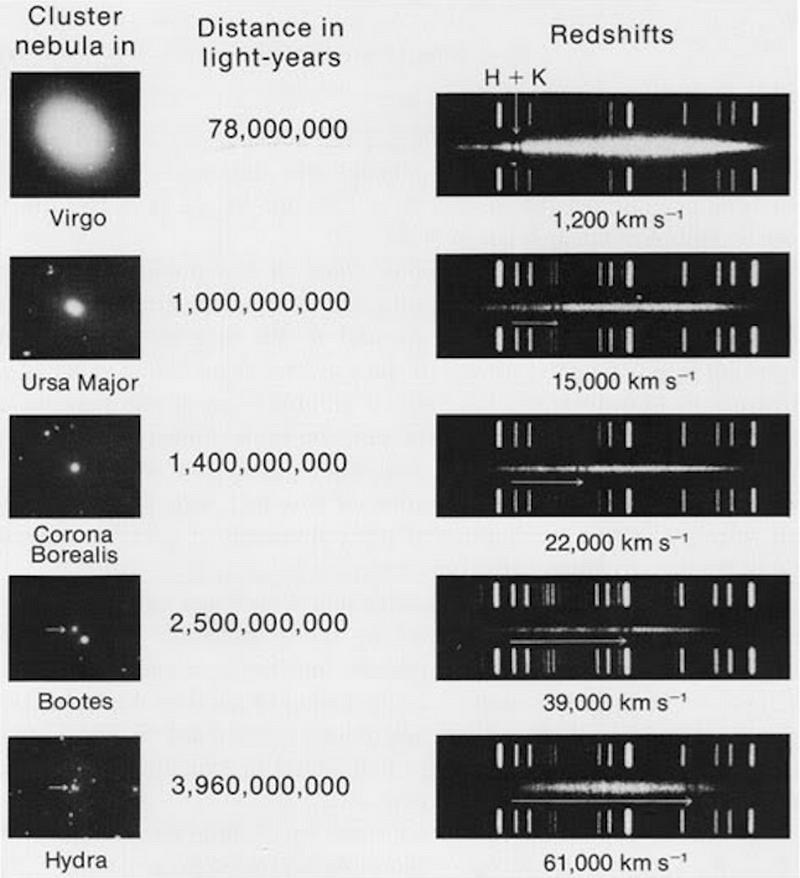
Primarily using the redshift data of Vesto Slipher and the distance inferences drawn from the optical data taken by Edwin Hubble and Milton Humason, we could immediately begin to tell that galaxies redshift more significantly the farther away they are. The Universe is expanding.
If it’s expanding, then it’s not static, and so there’s no need to invent a cosmological constant to keep the Universe from collapsing into a black hole. Einstein had made an incorrect assumption about the Universe’s behavior, developed an ad hoc fix for it in the form of a cosmological constant, and then had it demonstrated that his original assumption was flawed.
When he called the cosmological constant his “greatest blunder” it really was a blunder; if he had instead listened to what the equations told him, he could have predicted the expanding Universe!
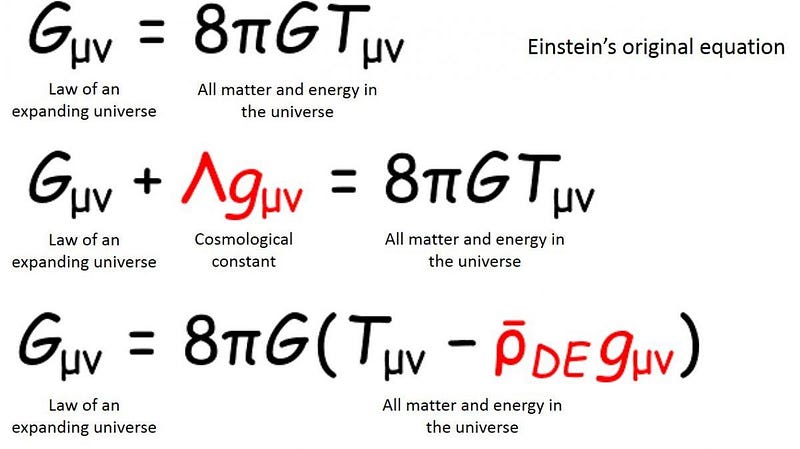
Today, just like every day for more than 20 years, the scientific consensus has been that there really is an effect that behaves just like a cosmological constant in the Universe: the accelerated expansion of the Universe. Only, today, we don’t demand that it must be a cosmological constant; we treat it as just another generalized form of energy with its own unique properties that must be determined observationally: dark energy.
The accelerated expansion that we see today indicates that dark energy’s behavior is indistinguishable from a cosmological constant’s behavior, which is extremely interesting. It’s no stretch to say that understanding and explaining dark energy is one of the biggest challenges facing 21st century science.
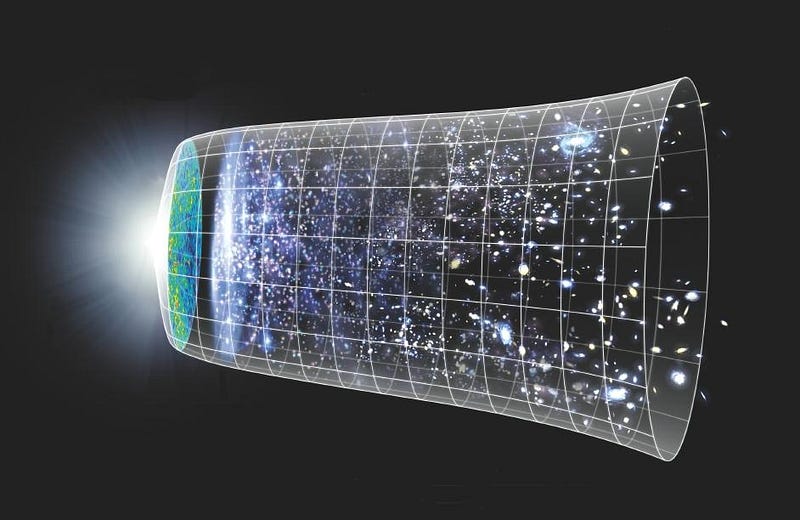
But there’s no retconning history; Einstein wasn’t right after all. While our Universe might actually have a non-zero cosmological constant, it isn’t there to stabilize our Universe. Rather, our Universe isn’t stable at all; it’s expanding from an initially hot, dense, and uniform state into the cold, sparse, and galaxy-rich cosmos we see today.
Einstein missed all of that because he insisted on a static Universe, and invented the cosmological constant to achieve that goal. Take it away, and you get a Universe that’s very much like the one we have today. The cosmological constant that affects our Universe serves to break the balance between the expansion and the other forms of matter-and-energy; it causes distant galaxies to accelerate away from us, pushing the Universe apart. Had Einstein predicted that, it would have been mind-boggling. Instead, he forced the equations to fit his (incorrect) assumptions, and missed the expanding Universe.
Ethan Siegel is the author of Beyond the Galaxy and Treknology. You can pre-order his third book, currently in development: the Encyclopaedia Cosmologica.





